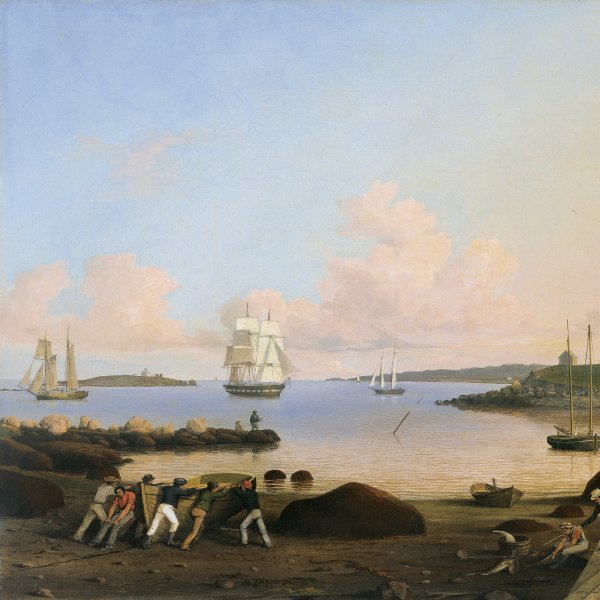Fitz Henry Lane
Gloucester, 1804-1865
Fitz Henry Lane was a representative of Luminism, a painting trend that emerged in the United States in the mid-nineteenth century and sought to depict landscape with particular attention to the brightest effects of light. He trained as a lithographer with the prestigious Boston firm William S. Pendleton, but soon took up oil painting, around 1840. In the city he met Robert Salmon, an English-born painter of seascapes whose luminous, highly detailed painting greatly influenced him.
Lane first travelled to Maine in the summer of 1848 with his great friend the Gloucester merchant Joseph Stevens. He made numerous visits to Maine throughout his life and portrayed its characteristic landscape in many of his paintings. That same year Lane settled permanently in Gloucester, where, together with his sister and brother-in-law, he had a huge granite mansion built in Duncan’s Port overlooking the small fishing port. Thereafter views of Gloucester and Cape Ann, as well as those painted during his spells in Maine, monopolised his entire output.
During the final years of his career Lane depicted a series of works on Brace’s Rock, which are regarded as the culmination of his Luminist painting. Lane’s compositions were characterised by their simplicity and discreet size, rendered in a perfectionist and finished style that is concerned with capturing the radiant effects of light and atmosphere in minute detail, causing time to appear to stand still in his works.
Lane first travelled to Maine in the summer of 1848 with his great friend the Gloucester merchant Joseph Stevens. He made numerous visits to Maine throughout his life and portrayed its characteristic landscape in many of his paintings. That same year Lane settled permanently in Gloucester, where, together with his sister and brother-in-law, he had a huge granite mansion built in Duncan’s Port overlooking the small fishing port. Thereafter views of Gloucester and Cape Ann, as well as those painted during his spells in Maine, monopolised his entire output.
During the final years of his career Lane depicted a series of works on Brace’s Rock, which are regarded as the culmination of his Luminist painting. Lane’s compositions were characterised by their simplicity and discreet size, rendered in a perfectionist and finished style that is concerned with capturing the radiant effects of light and atmosphere in minute detail, causing time to appear to stand still in his works.





